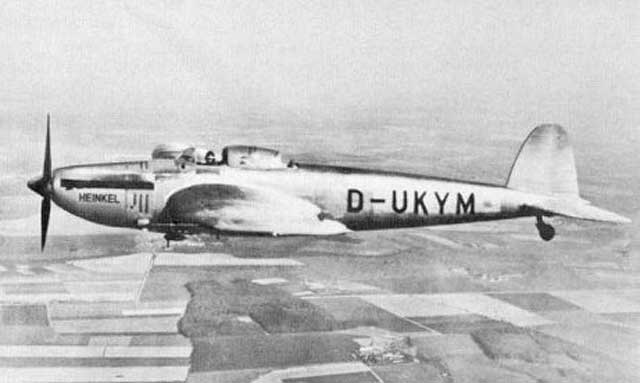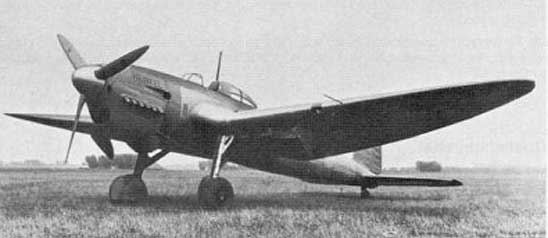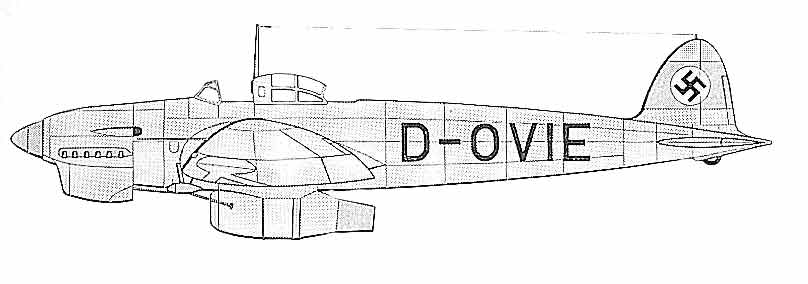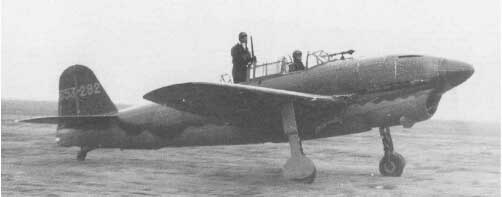

| Designed in 1935 with it's first flight on the 14/2/1936, the He 118 was competitor to the Ju 87 for the Luftwaffe's new dive bomber, the He 118 proved to be a more that capable aircraft, but in the end Junkers was awarded the contract. Altogether 13 aircraft were made with two being sold to Japan the V4(1296)and V5(1850) *(see foot note) |
| The He 118 V2(1294) made it's mark in history however by being the first aircraft to fly with a turbojet engine powering it, the He S 3a, if only briefly! This was in the summer of 1938, when testing of the new engine moved from the testbed to finding out how it would perform under flying conditions. The engine was mounted beneath the fuselage and between the wings of the He 118 as it had a high ground clearance which allowed for the safe fitting and maintenance of the engine. Test flights would start at around 4am and end at 6am this was to keep the development secret, the He 118 would take off under the power of it's piston engine, later igniting the He S 3a, which would result in a loud noise and a blue flame from the jet engine and a notable turn of speed from the He 118. |
 The He118 V-2 before testing with the Heinkel He S 3a turbojet engine |
| In the buildup to the flight of the He 178, the He 118 was flown on turbojet power alone, it's piston engine being cut off briefly in flight. At the time there were reports in near by villages of strange sounds, and in one case bits of metal dropping out of the sky!!. |
 |
This line drawing shows how the turbojet engine was fitted under the He 118 V-2, attached to the bomb mounting point |
| *The Japanese had been so impressed with the He 118 that they had bought from Germany that they planned to produce it in a modified form for carrier operation, but during a test flight the V-4 had broken up in midair. So late in 1938 the Yokosuka Arsenal, was instructed to design a replacement inspired by the He-118 . Chief Engineer Masao Yamana and his team created a clean mid-wing monoplane not only smaller and lighter than its inspiration, the He-118, but it had an internal bomb-bay and a longer range. Called the Yokosuka D4Y Suisei (Judy) total production of all variants came to 2,038 by the end of the war. |  |
|
The Yokosuka D4Y Suisei (Judy) inspired
by the He 118
|